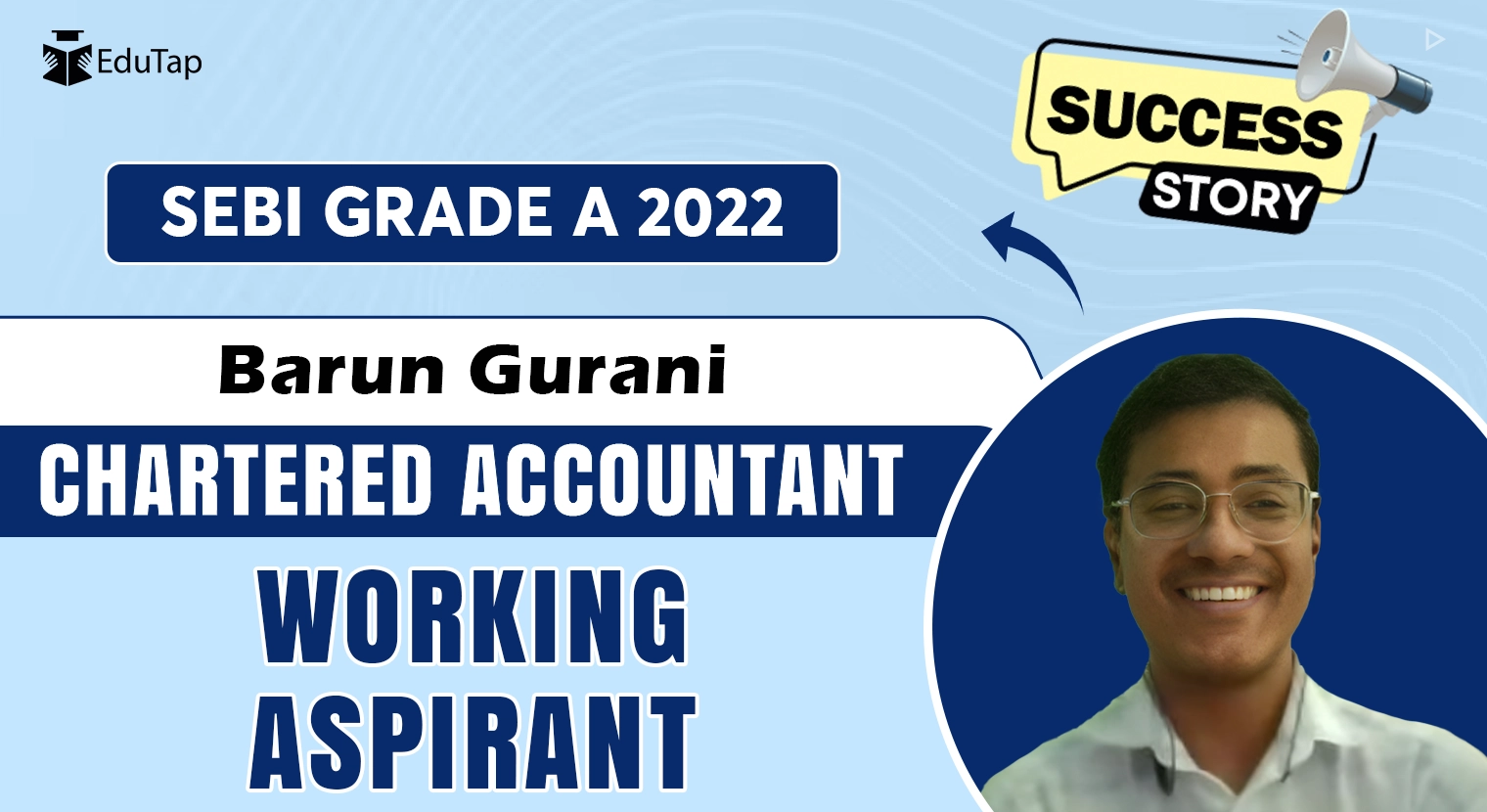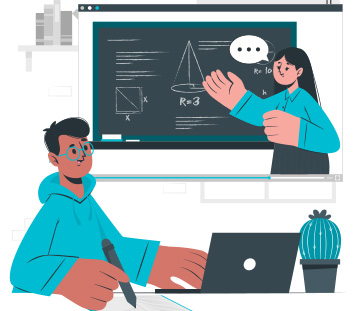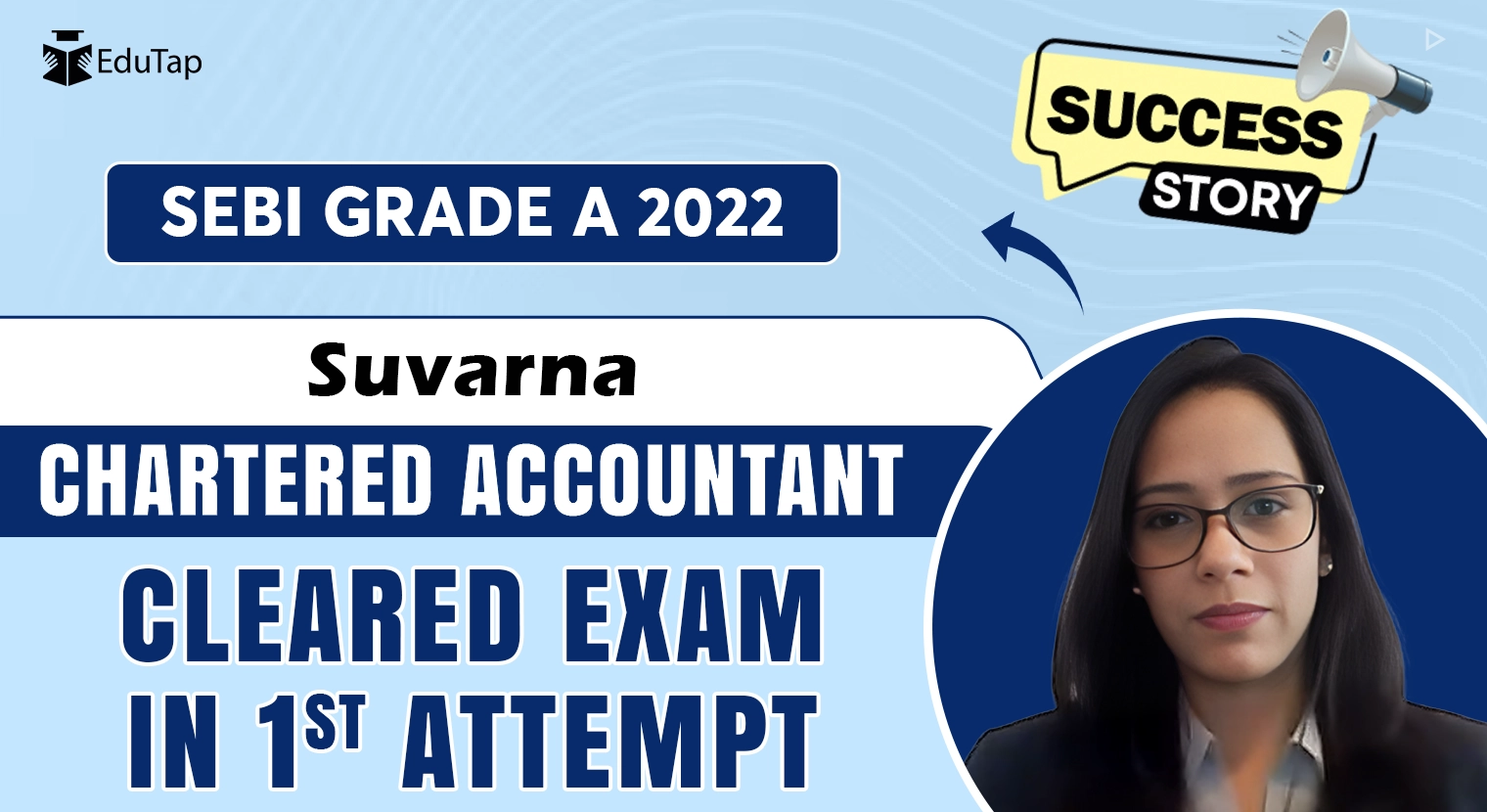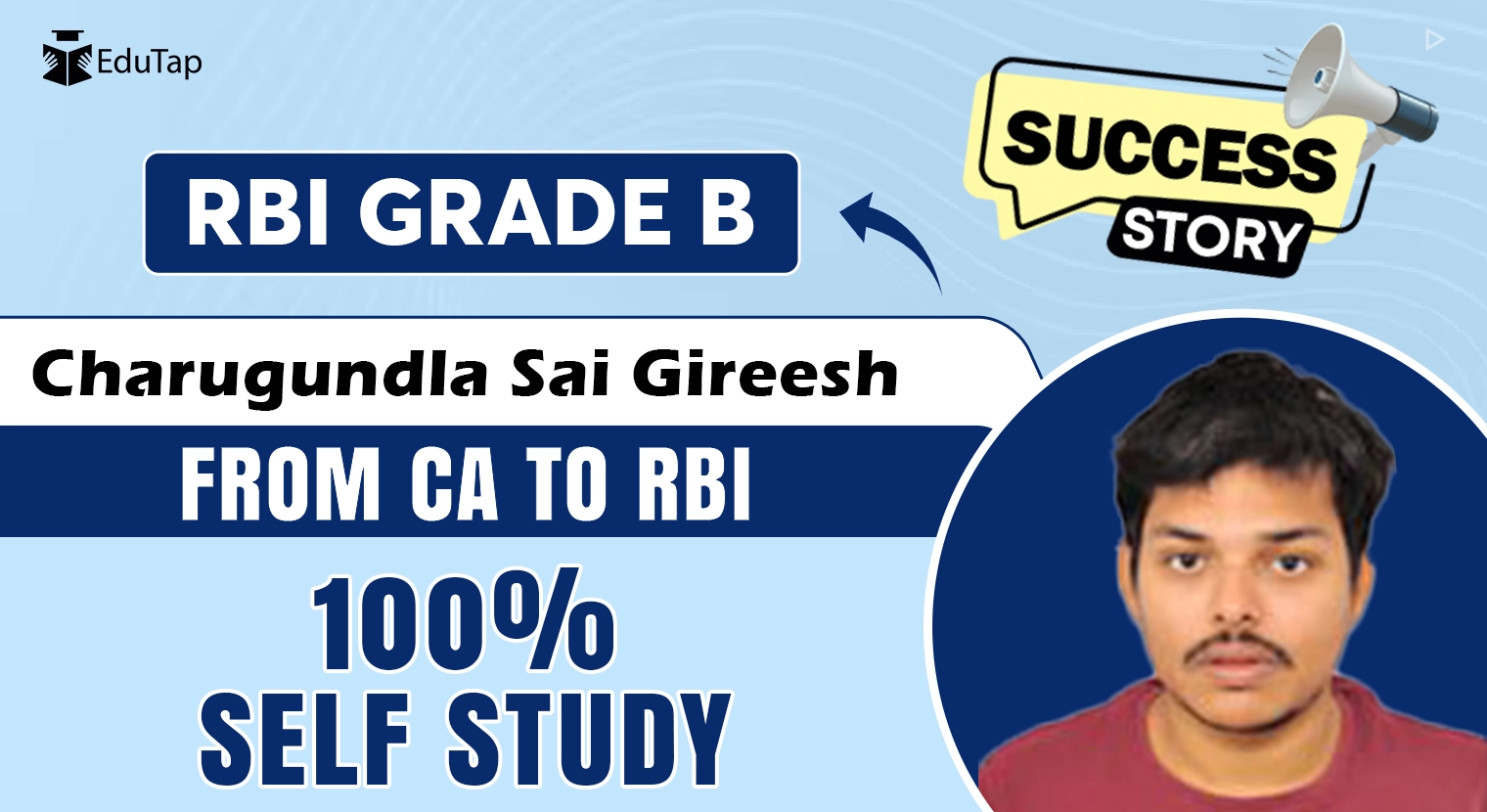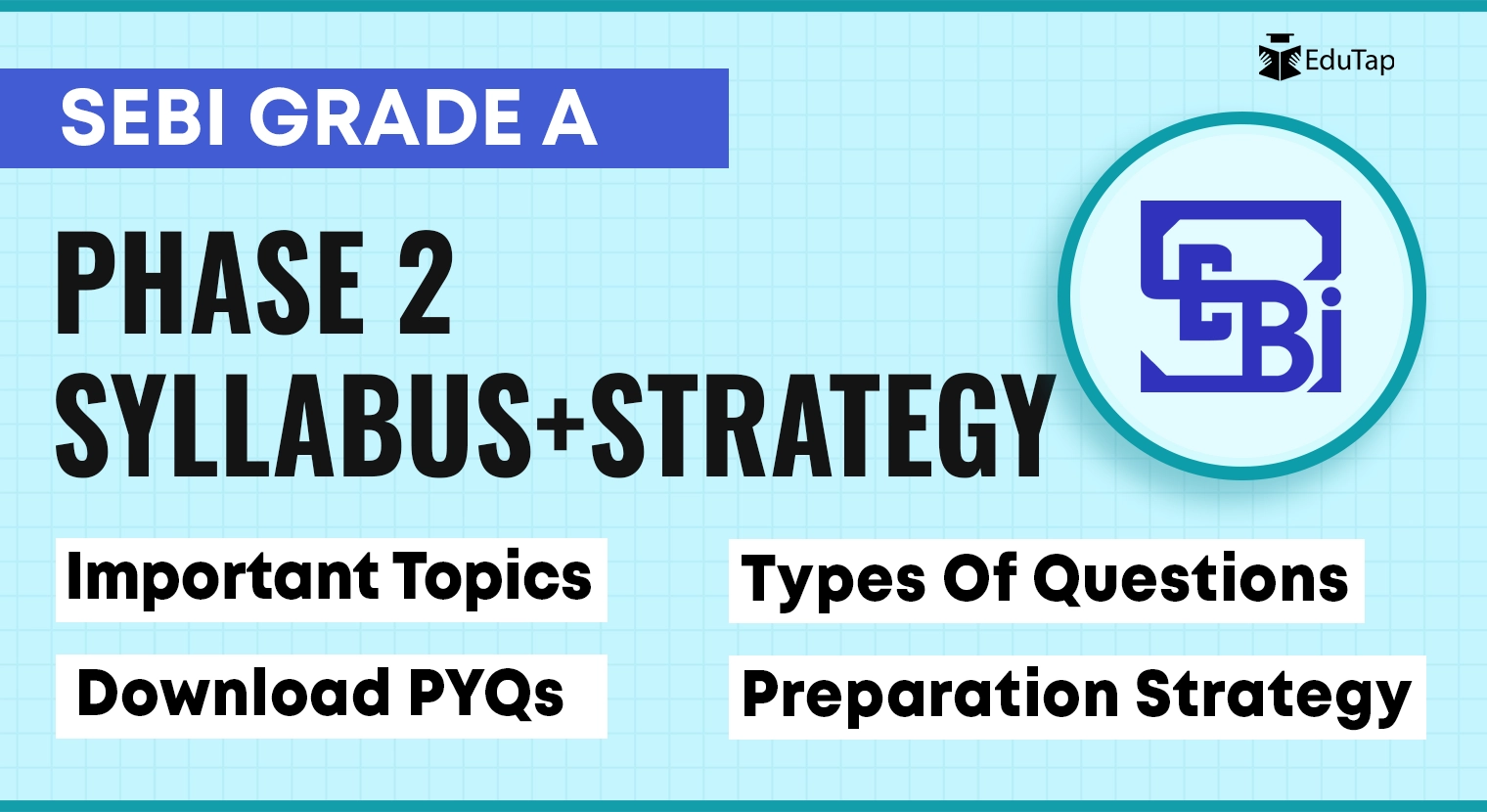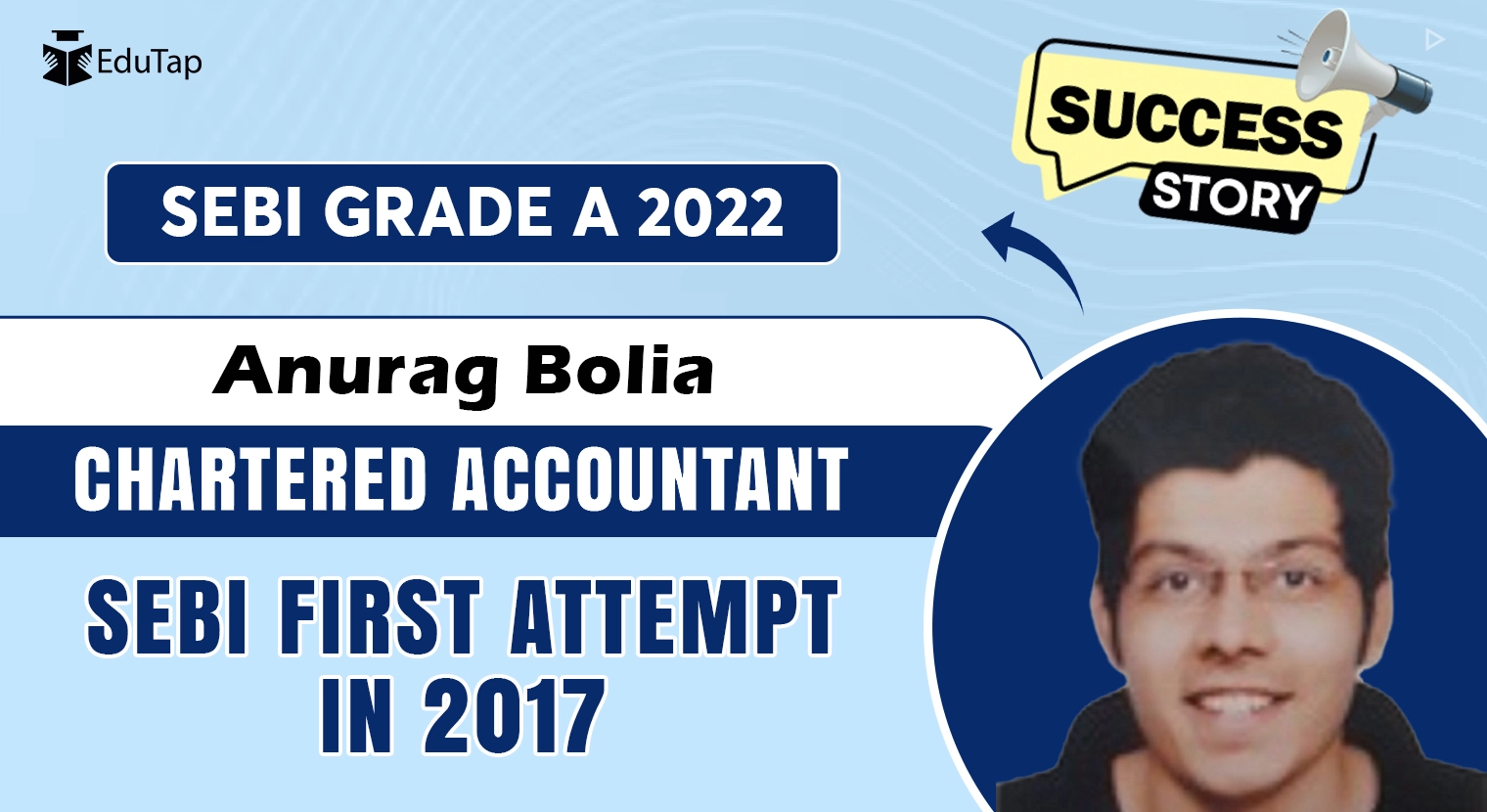This blog explores the success story of Barun, a Chartered Accountant who passed the SEBI Grade A exam in 2022 on his first try. His strong understanding of accountancy was a key factor in his preparation, helping him cover the extensive syllabus in just four months.
Let’s learn about his preparation strategy for cracking the SEBI Grade A exam, managing work responsibilities, and overcoming the difficulties of numericals in Paper 2. This blog provides valuable guidance for those preparing for their own SEBI Grade A journey based on Barun’s experiences.
Personal and Professional Details
Barun, a Chartered Accountant by profession, cleared the SEBI Grade A exam on his first attempt in 2022. He completed his schooling from Cambridge in 2014 and graduated from Delhi University in 2017. He cleared his CA in 2019 and has been working in a PSU under the Ministry of Railways since then.
Barun’s journey towards the SEBI Grade A exam began in his current company, where he and his group of friends would regularly discuss upcoming opportunities like the SEBI exam. After conducting his research, Barun found the SEBI Grade A to be a great opportunity and decided to give it a shot.
Balancing Work and Preparation
Balancing work and preparation was a challenge for Barun, especially as he was working in a PSU and his home was quite far from his workplace. However, he managed to utilize his commuting time effectively for revision. He would revise whatever he had read the previous night during his commute in the metro.
On reaching home, he would put in around three to four hours of study. He did not count the hours but estimated this based on his commuting and working hours. The actual time he got at home to study was quite limited.
Weekends were crucial for his preparation. He would wake up early and study in breaks of two to three hours. He emphasized the importance of utilizing weekends efficiently for preparation.
Despite the challenges, Barun managed his work and preparation effectively. His journey demonstrates that balancing work and preparation is not impossible for working aspirants. It requires efficient time management and a focus on one’s strengths.
SEBI Grade A: Preparation Time
Although he started his preparation after the notification was released, giving him around four to five months to prepare, Barun emphasized that his background in accountancy over the past four and a half years played a significant role in his preparation. He was able to grasp the concepts easily and clear the exam in four months.
When asked about the preparation time required for non-commerce background students, Barun suggested that around six months to one year of preparation should be put in, considering the level of the exam.
He stressed the importance of conceptual clarity, especially in topics like accounts and costing. According to him, building that conceptual clarity is crucial for someone starting from scratch. So, if you’re starting afresh, at least six months of preparation is needed, and for that, you need conceptual clarity.
SEBI Grade A Phase 1 QRE Preparation Strategy
Barun’s strategy for the Phase 1 of the SEBI Grade A exam for subjects namely Quantitative Aptitude, Reasoning, and English (QRE) was based on a self-analysis of his strengths and weaknesses. He identified that he was naturally good at Quantitative Aptitude and Reasoning as he had a keen interest in Mathematics since his school days. This led him to focus more on these two subjects in particular after brushing up on the basics.
He was aware of the 30% minimum cut-off in Paper 1 of Phase 1 and strategized accordingly. His goal was to clear the cut-off rather than topping the paper. He was confident that he could clear the 30% cut-off through Quantitative Aptitude and Reasoning alone.
English was another area where he felt comfortable. However, he identified General Awareness (GA) as his weak area. He did prepare a bit for GA but found that the questions in the exam did not align with his preparation. His overall strategy was to focus more on Quantitative Aptitude, Reasoning, and English, and less on GA.

Strategy for Paper 2 Preparation of SEBI Grade A
Phase 1 Paper 2 Strategy
Barun found the level of Phase 1 Paper 2 of the SEBI Grade A exam to be manageable. However, he identified Commerce as the hardest part of the paper. This was primarily because he did not have much time to brush up on all the subjects again for Phase 2, which had a 40% cut-off. He decided to prepare the subjects for Phase 2 separately and skipped certain topics in Phase 1.
In terms of subject strategy, Barun found Management to be difficult in Phase 1 as he had not prepared it thoroughly. He did not leave any topic in Phase 2, but in Phase 1, due to time constraints and the minimum cut-off of 40%, he focused on Accountancy, Costing, Finance, and a bit of Economics. He was able to clear the cut-off with this strategy.
Phase 2 Paper 2 Strategy
- Management and Finance: Management was another subject that proved to be tricky in the exam. However, he managed to attempt those questions where he was sure of the answers. Finance, on the other hand, was relatively easy for him in this exam.
- Commerce and Accountancy: Barun managed to handle the Commerce and Accountancy part of the exam by focusing on conceptual clarity and practicing numericals.
- Costing: In Costing also, he emphasized that conceptual clarity is needed for solving the numericals.
- Economics: In Economics, Barun found some questions challenging as he was not able to recognize some terms or handle some questions. However, he remained calm during the exam and managed to navigate through the paper.
In addition to the Paper 3 subjects, let’s have a look at how Barun dealt with the overall exam difficulty and managed to cover the vast syllabus for SEBI Grade A.
- Level of Difficulty: Barun found the level of Phase 2 Paper 2 of the SEBI Grade A exam to be quite challenging. He identified Economics as the hardest subject in this paper. The level of questions in Economics was quite different from what he had anticipated.
- Handling Unfamiliar Concepts: Despite encountering unfamiliar terms and concepts, Mr. Barun remained calm during the exam. His preparation and the conceptual clarity he gained from his CA course helped him navigate the paper.
- Preparation Material: For all the subjects taught in the Chartered Accountancy (CA) course, Barun referred to his ICAI (Institute of Chartered Accountants of India) material. For subjects like Economics and Management, which are not core to the CA curriculum, he relied on YouTube videos.
- Study Approach: He referred to the SEBI syllabus and made it a point to study topic-wise. He emphasized the importance of having a printout of the syllabus and sticking it to the wall. This served as a constant reminder of the topics that needed to be prepared. He would then Google or search on YouTube for each topic, gain a conceptual understanding, and make short notes for revision.
- Number of Mock Tests: Barun attempted four to five mock tests available on Google for the technical portion. He emphasized that mock tests are very important and aspirants should do as many as they can, depending on the time available. For example, once you have read the concept, practicing it through mock tests gives you a better understanding of how to attempt the numerical and how to apply what you have learned.
SEBI Grade A: How to Approach Numericals
Barun emphasized the importance of conceptual understanding when dealing with numericals. He pointed out that numericals in competitive exams are not very lengthy and are designed to test your conceptual understanding.
For example, in a question about calculating prime cost, if you understand the concept of prime cost, you can easily identify which components to include and which to ignore.
In SEBI Phase 2, which is known for difficult numericals in Commerce and Accountancy, Barun found the numericals not that tricky. He credited this to his clear understanding of the concepts. For instance, in a question about calculating the exchange difference, even though the question was lengthy, he was able to identify the figures needed for the calculation because he understood the concept.

Strategy for Descriptive English for SEBI Grade A
- Practice: Barun did not practice a lot but did a fair amount of practice for English. He strategized on how to attempt the three questions – Reading Comprehension (RC), Precis, and Essay (SA) – including the order of attempt and time allocation for each question.
- Time Management: He started with the Precis and was mindful of the word limit during his preparation. He wrote according to the approximate word limit.
- Interface Challenges: Barun highlighted that the interface was not very good. Aspirants should prepare themselves mentally for this and allocate time specifically for navigating the interface. The interface requires a lot of scrolling and the backspace key does not work as it should.
- Difficulty Level: Barun shared that the level of questions in Phase 2 of English was manageable. He suggested reading the questions first in the Reading Comprehension section and then reading the passage with those questions in mind.
- Essay Format: Barun followed the usual structure of writing an essay – Introduction, Body, and Conclusion. However, he was not able to complete the essay and couldn’t reach the conclusion.
- Marks: In Paper 1 of Phase 2, Barun scored 45 in English and 74.5 in the technical section. He was not able to complete the essay in English.
Interview Experience of SEBI Grade A
Barun’s interview for the SEBI Grade A exam was conducted by a panel of four members, all of whom were physically present. The panel was very helpful and the interview lasted around 15 minutes.
The interview started with questions about Barun’s Personal Information Application (PIA), specifically about his current and previous roles in different organizations. The panel also asked about his compensation in his current organization. The interview included both technical and general questions.
Technical questions revolved around topics like margin, cash segment, and mark-to-market margin. The panel also asked about the difference between surveillance and supervision. General questions were somewhat related to technical aspects, such as his investment habits and the factors he considers before making an investment decision. Barun also faced questions about his understanding of the Price-to-Earnings (P/E) ratio.
Despite his thorough preparation, he was not asked any questions from the SEBI website.
Before the final interview, Barun took a free mock interview, which he found quite helpful. The feedback from the mock interview panel helped him realize that he needed to brush up on his current affairs. He then went through various reports and resources, which helped him frame his answers during the actual interview.
You can listen to Barun share his experience himself in the following video.
Message for Aspirants
Barun’s message for new aspirants, especially those who are working, is to believe in themselves and be ready to put in hard work. He emphasized the importance of having conceptual clarity and the willingness to put in the effort required to clear the exam. He encouraged aspirants to believe that they can do it and ultimately, they will do it.
Here are a few other tips that Barun had for future aspirants based on his experience:
- Comprehensive Approach: Barun suggested that aspirants should not separate the preparation for technical subjects (Paper 2) in Phase 1 and Phase 2. Instead, a comprehensive approach should be followed. Aspirants should prepare all the subjects, regardless of whether they are for Phase 1 or Phase 2.
- Conceptual Clarity: The level of MCQs will be a bit difficult in Phase 2, but the concepts will remain the same. The first attempt should be to do a comprehensive preparation, not to segregate it like he did. In Phase 2, he advises not to leave any topic and to study them thoroughly. This approach worked for him and he was able to manage it effectively.
- Importance of Sticking to the Syllabus: Barun’s strategy highlights the importance of finding the right study material, focusing on the SEBI-released syllabus, and not studying everything available on platforms like YouTube. He advises aspirants to follow the syllabus, which he refers to as the ‘bible’ for preparation.
In conclusion, Barun’s journey to clearing the SEBI Grade A exam is a great example of the power of self-belief, hard work, and thorough preparation!
